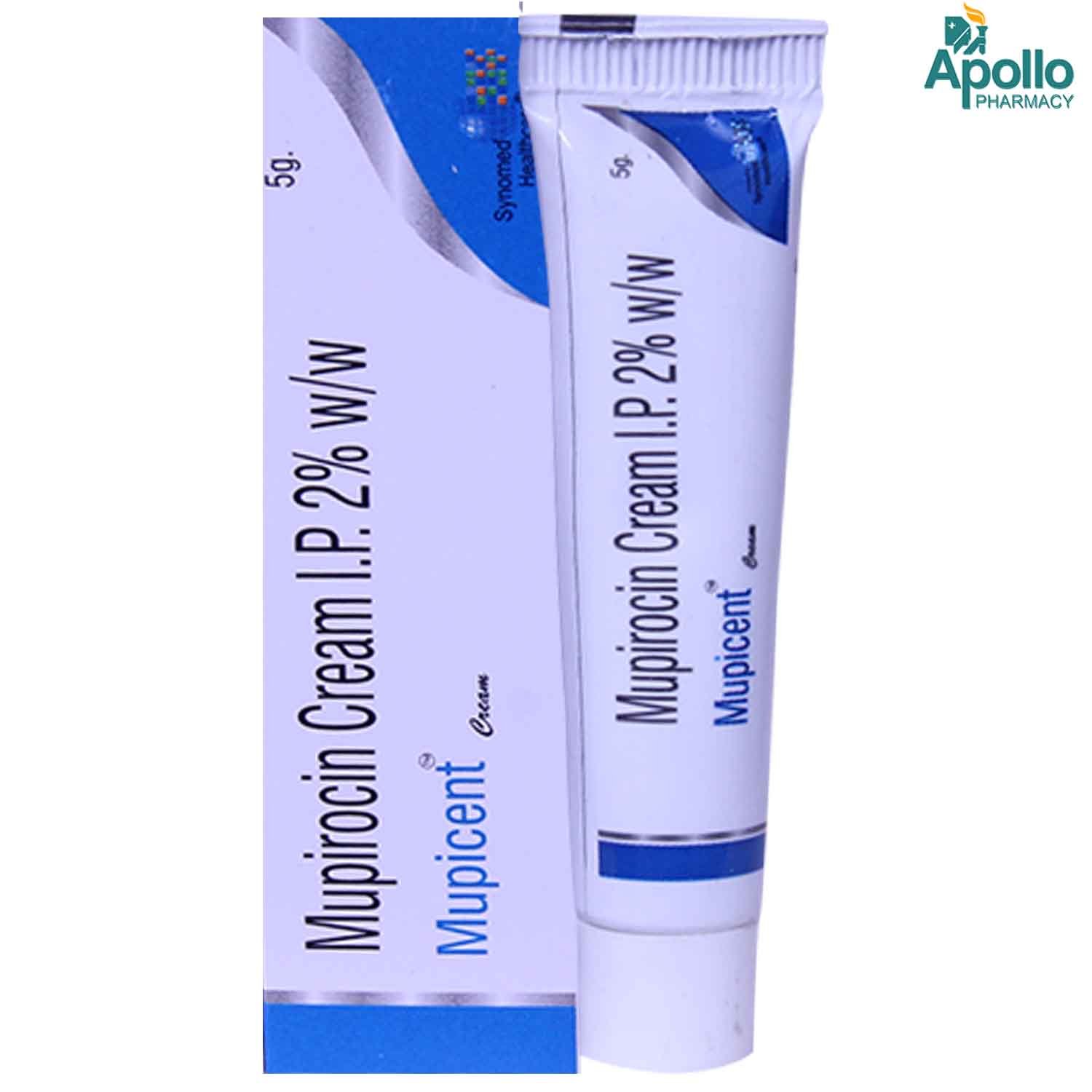Mupirocin
About Mupirocin
Mupirocin is a novel topical antibiotic used to treat skin infection 'impetigo' caused by bacterias namely Staphylococcus aureus and Streptococcus pyogenes. A bacterial infection is a condition in which bacteria grows in the body and cause infection. It can target any body part and multiple very quickly.
Mupirocin works by stopping the production of necessary proteins needed for bacterial surveillance. It is also active against Gram-negative organisms such as Escherichia coli and Haemophilus influenza. It is not effective against fungal or viral infections, and should not be applied on burnt skin areas and open-cut wound.
Mupirocin should only be used if advised by your doctor. It is not recommended for children below 2 months of age. Mupirocin should be used for skin only and accidentally if it gets into your eye, mouth or nose rinse with water. Mupirocin should be applied to the affected area with a piece of clean cotton wool or gauze swab. Mupirocin should not be applied more than the recommended dose, to avoid unpleasant side effects. And also, the course should be completed even if you feel better as it is an antibiotic. Some common side effects of Mupirocin are burning, itching, redness, stinging and dryness on your skin in the place where Mupirocin is applied. Sensitive allergic reaction (skin hypersensitivity reactions) like rashes, itching, swelling, and shortness of breath can occur in rare cases. Please consult your doctor if an allergic reaction becomes severe.
Tell your doctor if you are known to allergic to Mupirocin or any other medicines. It is not known whether Mupirocin harm baby or passes into breast milk. It is better to contact a doctor before using Mupirocin during pregnancy and while breastfeeding. If nursing mothers are applying Mupirocin to their breast or nipple, they should wash the affected area thoroughly before nursing their baby.
Uses of Mupirocin
Medicinal Benefits
Mupirocin is widely used to treat skin infections due to specific bacteria. This medicine works by killing bacteria or preventing their growth.
Directions for Use
Storage
Side Effects of Mupirocin
- Burning
- Itching
- Redness
- Stinging
- Dryness
Drug Warnings
Clostridium difficile-associated diarrhoea (CDAD) has been reported while using major topical antibacterial products. If CDAD is suspected or confirmed, the ongoing treatment of Mupirocin should be discontinued. Mupirocin should be stopped if irritation, severe itching, or skin rash occurs. If there is no improvement observed in 3-5 days, contact your doctor. Mupirocin should be used with caution in children less than 2 months of age. Prolonged use of Mupirocin may result in the overgrowth of fungi. Rinse with water in a case Mupirocin accidentally enters your nose, eyes, or mouth. A separate product of nasal is available for use in the nose. Mupirocin topical is for use only on the skin. Do not apply on the burnt skin or open cut wound.
Drug Interactions
Drug-Drug Interaction: No drug interactions have been identified with Mupirocin.
Drug-Food Interaction: No food interactions have been identified with Mupirocin.
Drug-Disease Interaction: Use with caution in patients with kidney disease or those on dialysis.
Drug-Drug Interactions Checker List:
Safety Advice

Alcohol
safe if prescribedNo reported interaction with Mupirocin. But, It is best to avoid alcohol while taking medication.

Pregnancy
safe if prescribedMupirocin is a category B pregnancy drug. Limited human data suggests that the drug does not represent any significant risk to the baby.

Breast Feeding
safe if prescribedIt is not known whether Mupirocin harm baby or passes into breast milk in the breastfeeding state. So, it is better to contact a doctor before using Mupirocin during breastfeeding. If nursing mothers are applying Mupirocin to their breast or nipple, they should wash the affected area thoroughly before nursing their baby.

Driving
safe if prescribedMupirocin has no or negligible influence on the ability to drive or use machines.

Liver
safe if prescribedMupirocin does not have any reported interaction hence, in case you experience any difficulty discuss with your doctor.

Kidney
safe if prescribedMupirocin does not have any reported interaction hence, in case you experience any difficulty discuss with your doctor.

Children
safe if prescribedMupirocin can be given safely to children provided; dose has been prescribed by a child specialist. However, Mupirocin should not be used in children less than 2 months of age.
Habit Forming
Patients Concern
Disease/Condition Glossary
Your skin is your body’s largest organ. Its aim is to protect your body against infection. The skin itself gets infected occasionally. Infections of bacterial skin frequently begin as tiny, red bumps that increase in size slowly. A wide variety of germs cause skin infections, and symptoms can range from mild to severe. With over-the-counter medications and home remedies, mild infections may be treatable, while other infections may need medical attention.
FAQs
Your symptoms may improve before the infection is completely cured. But, it would be suggested to complete the full course of treatment even if you feel better.
Exercise caution while using this medicine for treating skin with any open wounds unless suggested by your doctor. Not be used around eyes or nose.
Apply a small amount of Mupirocin, with a cotton swab or gauze pad to the affected area of the skin as per the dosage and schedule prescribed by your doctor
Apply the missed dose as soon as you remember. Skip the missed dose if it is almost time for your next dose. Do not use extra medicine to make up for the missed dose.
Antibiotic medicines can cause diarrhoea, which may be a sign of a new infection. If you have diarrhoea that is watery or bloody, call your doctor. Do not use anti-diarrheal medicine unless your doctor tells you to.





